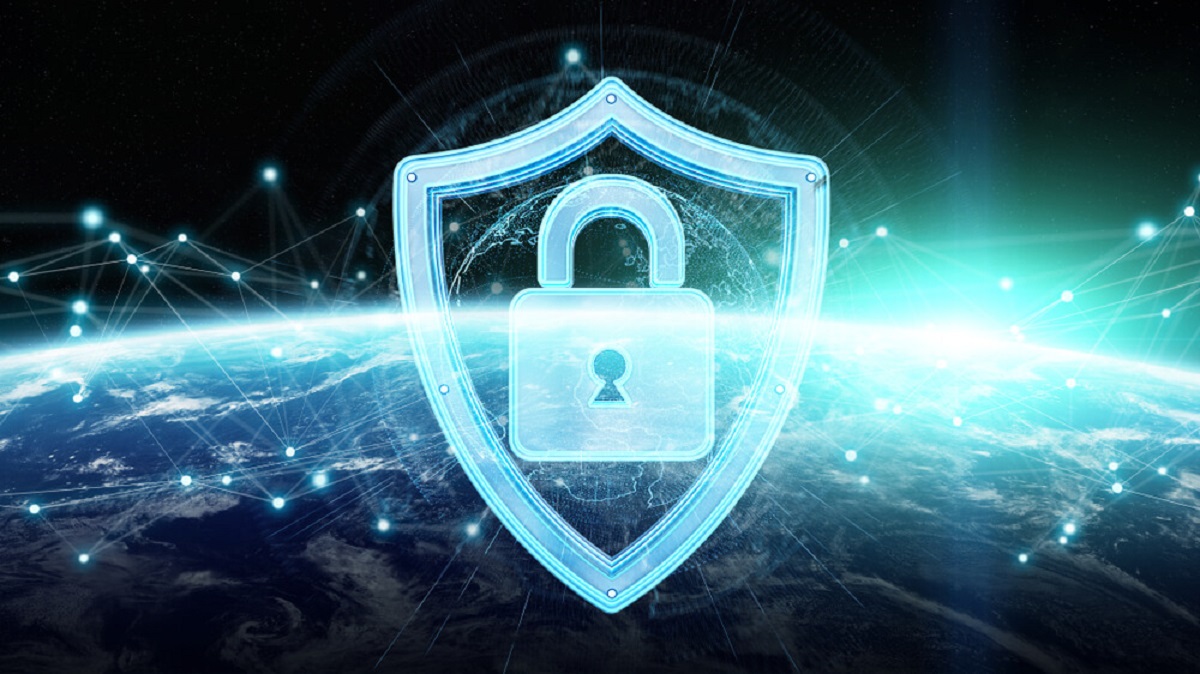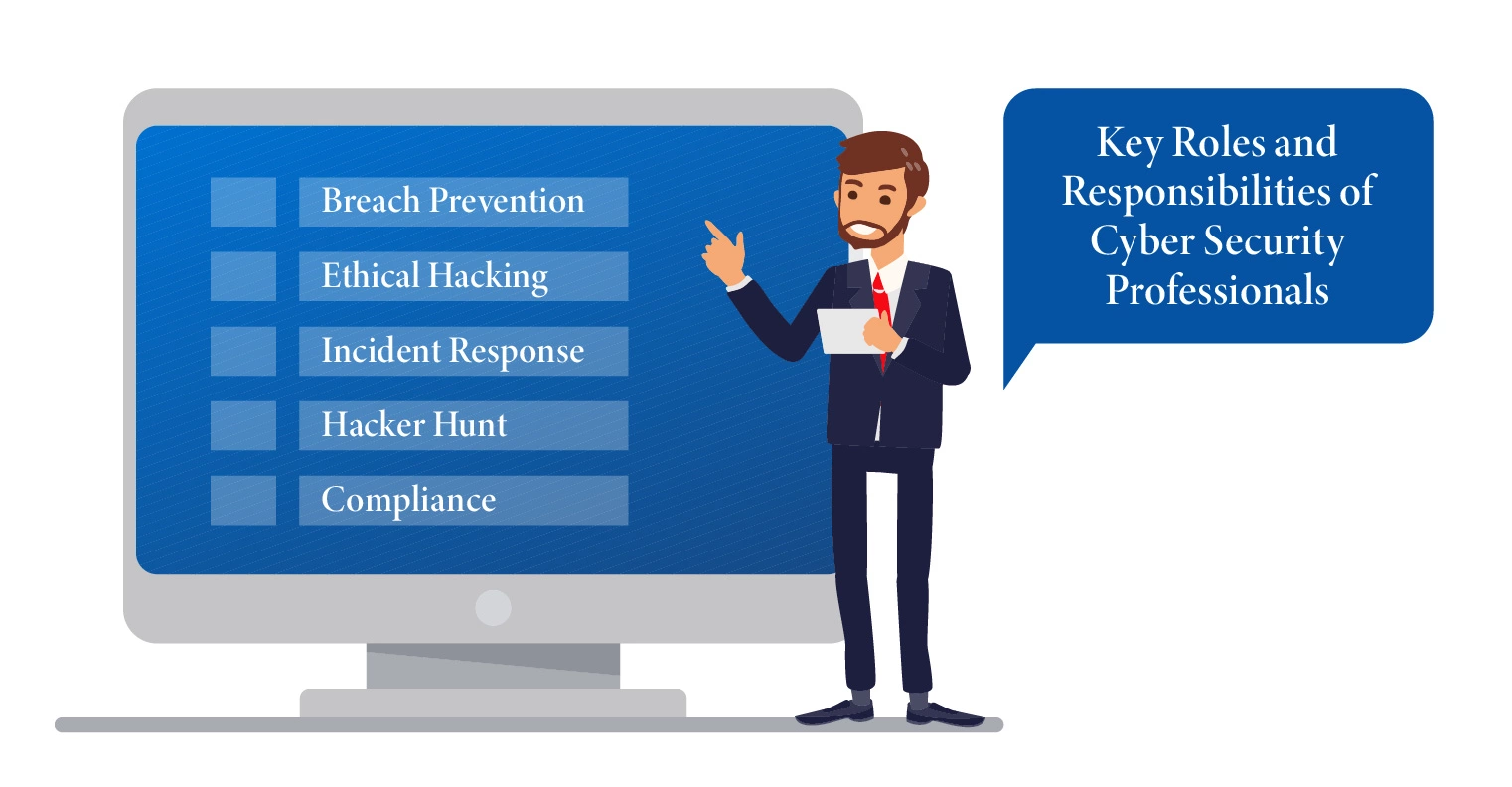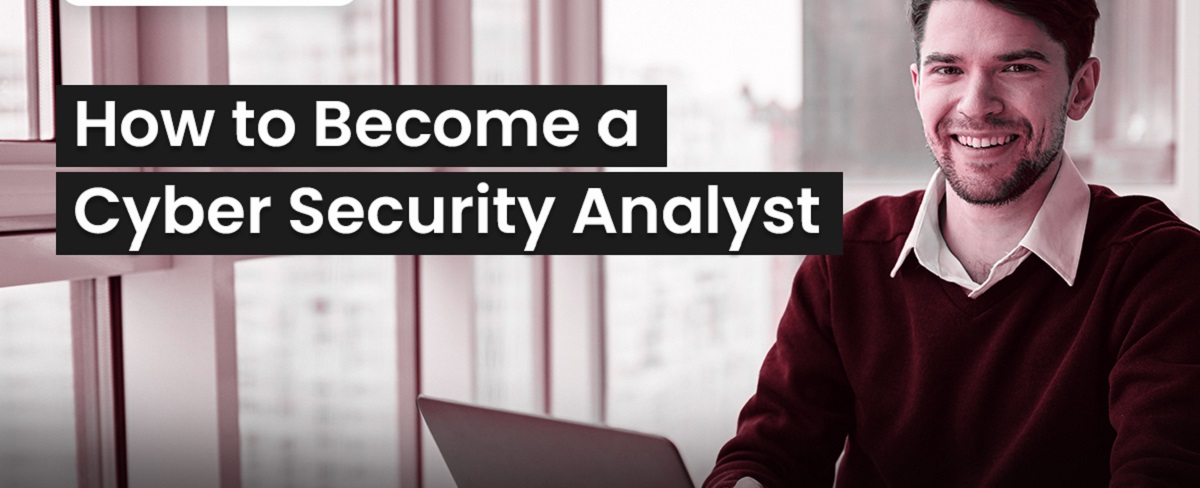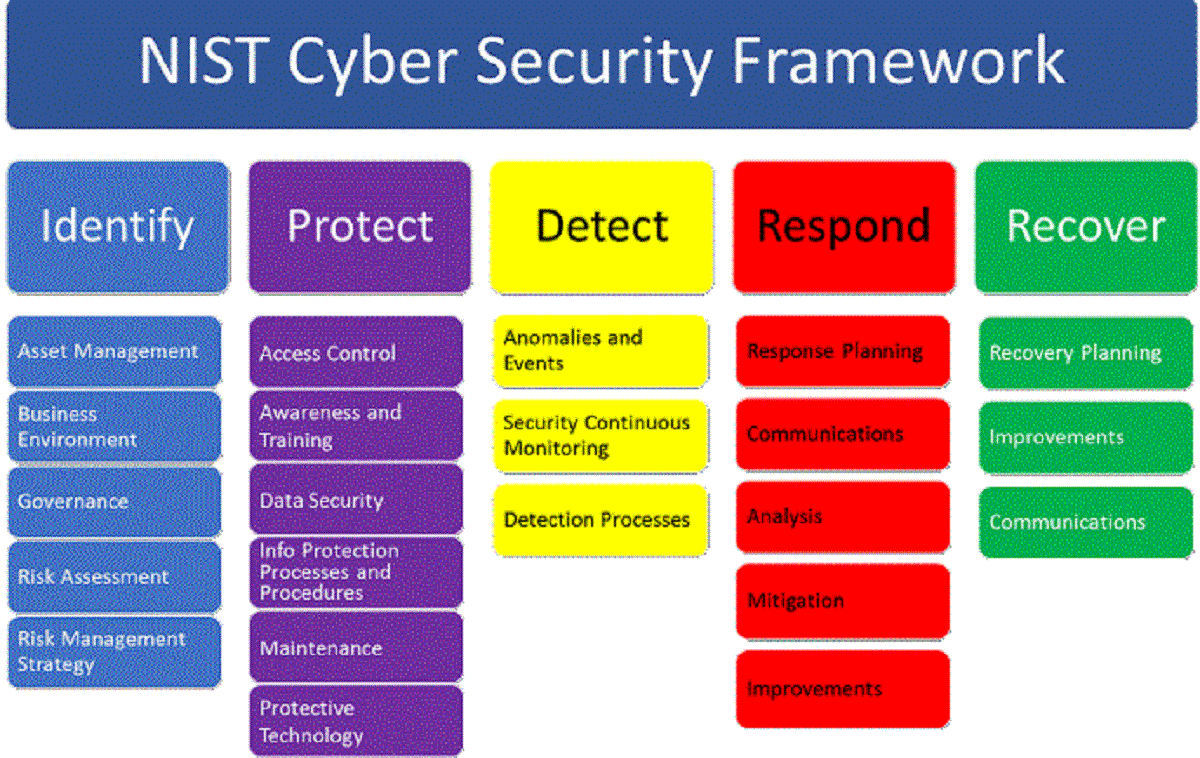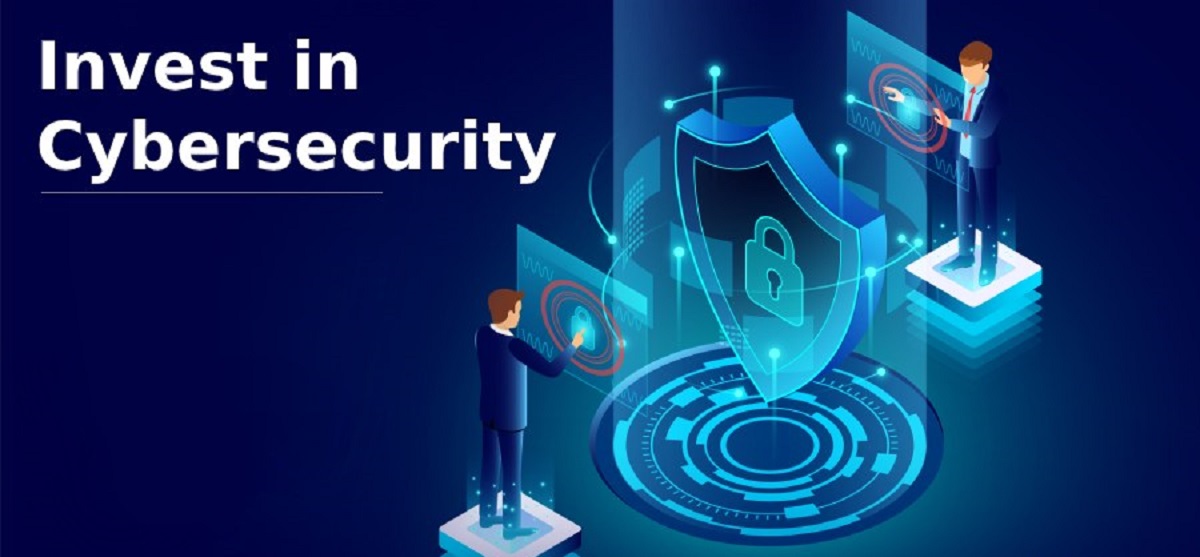Introduction
Welcome to our comprehensive guide on how to create a cybersecurity program. In today’s digital age, where technology plays a crucial role in our personal and professional lives, ensuring the security of our data has become paramount. Cyber threats are on the rise, and organizations of all sizes and industries are at risk of falling victim to data breaches, hacking, and other malicious activities.
A cybersecurity program serves as the foundation for protecting your organization’s sensitive information, networks, and systems from unauthorized access and potential attacks. It involves a combination of established policies, procedures, and technologies that work together to safeguard your digital assets. Implementing an effective cybersecurity program not only helps protect your organization’s reputation but also ensures the confidentiality, integrity, and availability of critical data.
In this guide, we will walk you through the essential steps to create a robust cybersecurity program that aligns with your organization’s unique needs and risk profile. Whether you are starting from scratch or looking to enhance your existing security measures, this guide will provide valuable insights and practical recommendations to help you navigate the complex world of cybersecurity.
We will cover various aspects of creating a cybersecurity program, including assessing your organization’s risk, designing a cybersecurity framework, developing security policies and procedures, implementing security controls and technologies, securing networks and system infrastructure, training and educating employees, monitoring and incident response, conducting regular security audits and reviews, and continuously improving your cybersecurity program.
By following the guidelines outlined in this guide, you will be equipped with the knowledge and tools necessary to establish a robust cybersecurity program that can effectively mitigate risks and protect your organization’s valuable assets. Let’s dive in and get started!
Understanding the Importance of Cybersecurity
In today’s digital landscape, where technology has become an integral part of our lives, cybersecurity has become a critical concern for individuals, businesses, and governments alike. The increasing reliance on digital systems and networks has opened up new avenues for cyber attackers to exploit vulnerabilities and compromise sensitive data.
The importance of cybersecurity cannot be overstated. A data breach or a cyber attack can have severe consequences for organizations, including financial losses, reputational damage, legal implications, and loss of customer trust. Here are a few reasons why cybersecurity is of paramount importance:
- Data Protection: Cybersecurity measures are implemented to safeguard sensitive data, such as customer information, financial records, and intellectual property from unauthorized access or theft. By protecting this valuable data, organizations can avoid devastating consequences.
- Preventing Financial Losses: A successful cyber attack can result in significant financial losses. Costs associated with incident response, data recovery, regulatory fines, legal fees, and customer compensation can quickly add up. Implementing robust cybersecurity measures can help minimize the financial impact of an attack.
- Preserving Business Reputation: Customer trust is vital for the success of any organization. A data breach can tarnish a company’s reputation and erode the trust customers have placed in it. By prioritizing cybersecurity, organizations demonstrate their commitment to protecting customer data and preserving their reputation.
- Compliance with Regulations: Many industries are subject to regulatory frameworks that mandate the implementation of specific cybersecurity measures. By ensuring compliance, organizations can avoid hefty fines and legal penalties and maintain a good standing with regulatory authorities.
- Competitive Advantage: In today’s competitive business landscape, a strong cybersecurity posture can set organizations apart from their competitors. Customers and partners are more likely to work with companies that prioritize cybersecurity, knowing their data is in safe hands.
As technology continues to evolve, so do the tactics employed by cyber attackers. It is crucial for organizations to stay ahead of these threats by adopting proactive cybersecurity measures. By understanding the importance of cybersecurity and investing in robust security practices, organizations can reduce their risk exposure and protect their valuable assets from malicious actors.
Assessing Your Organization’s Risk
Before you can effectively develop a cybersecurity program, it is essential to assess your organization’s risk landscape. Every organization has unique vulnerabilities and threats that need to be identified and understood. By conducting a comprehensive risk assessment, you can gain insights into the specific risks your organization faces and prioritize your cybersecurity efforts accordingly.
Here are the key steps to assess your organization’s risk:
- Identify Assets: Start by identifying and documenting all the assets within your organization that need to be protected. This includes hardware, software, data, networks, systems, and any other critical resources.
- Understand Threats: Research and analyze the potential threats that could affect your organization. This includes external threats such as hackers, malware, and phishing attempts, as well as internal threats like disgruntled employees or accidental data breaches.
- Analyze Vulnerabilities: Identify the vulnerabilities or weaknesses in your organization’s assets that could be exploited by threats. This can include outdated software, weak passwords, lack of employee awareness, or inadequate security controls.
- Assess Potential Impact: Evaluate the potential impact of a successful cyber attack on your organization. Consider financial losses, reputation damage, legal repercussions, and any other consequences that may arise from a security incident.
- Quantify Likelihood: Determine the likelihood of each identified threat exploiting the vulnerabilities within your organization. This can be done through research, analysis of historical data, and expert opinions.
- Risk Prioritization: Once you have identified and assessed the risks, prioritize them based on the potential impact and likelihood. This will help you allocate resources effectively and focus on addressing the most critical risks first.
- Document Risk Assessment: Document all the findings and results of the risk assessment process. This will serve as a reference point as you develop your cybersecurity program and help you track progress over time.
Remember that risk assessment is an ongoing process. As your organization evolves and new threats emerge, it is important to regularly review and update your risk assessment to ensure the effectiveness of your cybersecurity program. By accurately assessing your organization’s risk, you can make informed decisions and implement the appropriate security measures to protect your valuable assets from potential cyber threats.
Designing a Cybersecurity Framework
A cybersecurity framework serves as a guide for implementing and managing a comprehensive cybersecurity program within an organization. It provides a structured approach to identify, protect, detect, respond to, and recover from cyber threats. Designing a cybersecurity framework tailored to your organization’s specific needs and risk profile is crucial for establishing an effective and efficient cybersecurity program.
Here are the key steps to consider when designing a cybersecurity framework:
- Define Objectives: Clearly define the objectives of your cybersecurity program. This may include protecting sensitive data, ensuring the availability of critical systems, complying with industry regulations, and maintaining customer trust.
- Identify Guidelines and Standards: Identify and evaluate industry-recognized cybersecurity guidelines and standards that align with your organization’s requirements. Examples include NIST Cybersecurity Framework, ISO 27001, and CIS Controls. These frameworks provide valuable insights on best practices and can serve as a foundation for your cybersecurity framework.
- Customize the Framework: Tailor the chosen cybersecurity framework to your organization’s specific needs and risk profile. Consider the industry you operate in, the size and complexity of your infrastructure, and any regulatory requirements that apply to your organization.
- Establish Information Governance: Define the roles, responsibilities, and accountability for managing cybersecurity within your organization. This includes establishing a governance structure, appointing a dedicated cybersecurity team, and ensuring clear lines of communication.
- Develop Policies and Procedures: Create a comprehensive set of cybersecurity policies and procedures that outline the rules and guidelines for protecting your organization’s assets. This includes policies related to access control, data classification, incident response, employee training, and more. Make sure these policies are reviewed and updated regularly.
- Implement Security Controls: Identify and implement the appropriate security controls and technologies to protect your organization’s assets. This may include firewalls, intrusion detection and prevention systems, data encryption, multi-factor authentication, and more. Regularly monitor and update these controls to adapt to emerging threats.
- Establish Incident Response Plan: Develop a detailed incident response plan that outlines the steps to be taken in the event of a cybersecurity incident. This includes defining roles and responsibilities, establishing communication protocols, and documenting the procedures for investigating, containing, and recovering from a security breach.
- Monitor and Assess: Implement a robust monitoring system to detect and respond to security events in real-time. Perform regular assessments and audits to evaluate the effectiveness of your cybersecurity program and identify areas for improvement.
- Continuously Improve: Cybersecurity is a constantly evolving field. Stay up to date with the latest threats, trends, and technologies. Continuously improve your cybersecurity program by incorporating lessons learned from security incidents, industry best practices, and emerging cybersecurity frameworks.
Remember that designing a cybersecurity framework is not a one-time event. It requires ongoing evaluation, refinement, and adaptation to ensure its effectiveness in an ever-changing threat landscape. By following these steps and customizing the framework to your organization’s unique needs, you can create a solid foundation for a robust cybersecurity program.
Developing Security Policies and Procedures
Developing and implementing effective security policies and procedures is a critical component of any cybersecurity program. Security policies provide the guidelines and rules that employees and stakeholders must follow to ensure the protection of sensitive data and the integrity of systems and networks. Procedures outline the step-by-step actions to be taken in specific security-related scenarios. Together, security policies and procedures establish a framework that helps organizations mitigate risks, enforce security controls, and maintain a strong security posture.
Here are the key steps involved in developing security policies and procedures:
- Identify Regulatory Requirements: Determine the legal and regulatory requirements that apply to your organization. Understand the specific obligations regarding data protection, privacy, and cybersecurity. This will serve as a foundation for your security policies.
- Involve Key Stakeholders: Engage the necessary stakeholders, including management, legal, IT, and Human Resources, to ensure a comprehensive understanding of the organization’s security needs and compliance requirements.
- Establish a Security Policy Framework: Create a framework that outlines the structure, objectives, and scope of your security policies. This framework will ensure consistency and clarity across all policies and procedures.
- Create Security Policies: Develop security policies that address key areas such as access control, data classification and handling, acceptable use of technology resources, incident response, third-party vendor management, and employee training on security awareness. Ensure the policies are clear, concise, and align with industry best practices.
- Document Security Procedures: Outline step-by-step procedures for various security-related scenarios, such as data breaches, system outages, incident response, and employee onboarding and offboarding. These procedures should provide clear instructions on how to handle situations and mitigate risks effectively.
- Communicate and Train: Clearly communicate the security policies and procedures to all employees and stakeholders. Conduct regular training sessions to ensure everyone understands their roles and responsibilities in maintaining a secure environment.
- Enforce Policy Compliance: Establish mechanisms to monitor and enforce policy compliance. Regularly review and update policies to reflect changes in technology, regulations, and emerging threats. Implement consequences for non-compliance to ensure accountability.
- Periodically Assess and Review: Conduct regular assessments and reviews of your security policies and procedures to identify gaps, improve effectiveness, and address evolving threats. Involve key stakeholders in these assessments to gain valuable insights and ensure continuous improvement.
Remember, security policies and procedures should be tailored to your organization’s specific needs, risk profile, and regulatory requirements. Regularly review and update them to address emerging threats and changes in the business environment. By developing and implementing comprehensive security policies and procedures, you establish a strong foundation for a robust cybersecurity program that protects your organization’s critical assets.
Implementing Security Controls and Technologies
Implementing security controls and technologies is a crucial aspect of a comprehensive cybersecurity program. These measures help protect your organization’s critical assets, detect potential threats, and respond effectively to cybersecurity incidents. By implementing the right combination of security controls and technologies, you can greatly enhance your organization’s security posture and minimize the risk of a successful cyber attack.
Here are key steps to consider when implementing security controls and technologies:
- Perform a Risk Assessment: Before implementing security controls, conduct a thorough risk assessment to identify your organization’s vulnerabilities and prioritize security measures accordingly. This assessment will help ensure you address the most critical risks first.
- Establish a Defense-in-Depth Approach: Implement a layered security approach that includes multiple security controls at various levels. This helps create multiple barriers against potential threats and ensures that even if one control fails, others are still in place to protect your organization.
- Implement Access Controls: Employ strong access controls to restrict access to sensitive data, systems, and networks. Use authentication methods such as multi-factor authentication and enforce the principle of least privilege, granting users only the minimum access necessary to perform their tasks.
- Secure Network Perimeters: Secure your network perimeters with firewalls, intrusion prevention systems, and virtual private networks (VPNs) to monitor and control incoming and outgoing network traffic. Regularly update and patch these systems to address new vulnerabilities.
- Encrypt Data: Implement encryption measures to protect data at rest and in transit. Encrypt sensitive data stored on servers, workstations, and mobile devices. Utilize encryption protocols such as SSL/TLS for secure communications over the internet.
- Monitor and Detect Threats: Employ security monitoring tools and technologies to detect and analyze potential security incidents. Implement intrusion detection and prevention systems (IDS/IPS), security information and event management (SIEM) solutions, and employ advanced threat intelligence to identify and respond to threats promptly.
- Implement Endpoint Protection: Install and regularly update endpoint protection software to prevent malware infections and unauthorized access. Utilize anti-virus, anti-malware, and host-based intrusion prevention systems (HIPS) to secure endpoints such as computers, laptops, and mobile devices.
- Implement Employee Security Awareness Training: Educate employees about security best practices and potential threats. Conduct regular training sessions to raise awareness of phishing attacks, social engineering, and other common tactics employed by cyber criminals. Encourage employees to report any suspicious activities promptly.
- Establish Incident Response Capability: Develop an incident response plan and implement the necessary tools and technologies to effectively respond to security incidents. This includes establishing incident response teams, defining roles and responsibilities, and conducting regular drills and exercises to test and refine your response capabilities.
- Regularly Assess and Update: Continuously assess and update your security controls and technologies to adapt to evolving threats. Stay informed about emerging vulnerabilities and apply patches and updates promptly to address them.
Remember that implementing security controls and technologies is an ongoing effort. Regularly review and refine your security measures to align with your organization’s changing needs and the evolving threat landscape. By investing in the right security controls and technologies, you greatly enhance your organization’s ability to mitigate risks and protect critical assets.
Securing Networks and System Infrastructure
In today’s interconnected world, securing your organization’s networks and system infrastructure is of paramount importance. Networks and systems serve as the backbone of your digital operations, and any vulnerabilities within them can be exploited by cyber attackers. By implementing robust security measures, you can protect your organization’s valuable data, maintain the integrity of your systems, and ensure the availability of critical services.
Here are key steps to consider when securing networks and system infrastructure:
- Implement a Secure Network Architecture: Design and implement a secure network architecture that employs layered security measures. Segment your network into separate zones to limit the impact of a potential breach and control access to critical resources.
- Manage Network Access: Implement strong access controls to restrict unauthorized access to your network and systems. Use firewalls, virtual private networks (VPNs), and secure remote access methods to control and monitor network connections.
- Keep Software and Systems Up-to-Date: Regularly update and patch your operating systems, software applications, and network devices. Many updates include security fixes that address known vulnerabilities, so keeping your systems updated is critical to maintaining a secure infrastructure.
- Secure Wireless Networks: Implement proper security measures for your wireless networks. Enable strong encryption (WPA2 or WPA3), use unique and complex passwords, and regularly change the wireless network password to prevent unauthorized access.
- Utilize Intrusion Detection and Prevention Systems: Deploy intrusion detection and prevention systems (IDS/IPS) to monitor network traffic and detect any suspicious or malicious activities. These systems can help identify potential threats and take immediate action to mitigate them.
- Encrypt Network Traffic: Secure sensitive information by using encryption protocols such as SSL/TLS for network communications. Encrypting data as it travels across your network prevents unauthorized interception and helps maintain confidentiality.
- Implement Strong Password Policies: Enforce strong password policies and educate employees about the importance of using unique, complex passwords. Encourage the use of password managers and two-factor authentication to enhance password security.
- Regularly Backup Data: Implement a regular data backup strategy to ensure business continuity in the event of a security incident or system failure. Store backups in a secure and separate location to prevent loss or compromise of critical data.
- Monitor and Respond to Network Security Events: Implement network monitoring tools and establish processes to promptly detect and respond to network security events. Use security information and event management (SIEM) solutions to centralize and correlate security logs, enabling quick identification and response to potential threats.
- Conduct Periodic Network Penetration Testing: Regularly assess the security of your network infrastructure through penetration testing. This will help identify vulnerabilities and weaknesses that could be exploited by attackers and allow you to remediate them proactively.
Securing networks and system infrastructure is an ongoing effort that requires regular evaluation, updates, and awareness of emerging threats. By implementing these measures, you can significantly reduce the risk of a successful cyber attack and protect the critical assets of your organization.
Training and Educating Employees on Cybersecurity
One of the critical elements of a robust cybersecurity program is ensuring that employees are well-trained and educated on cybersecurity best practices. Employees play a vital role in maintaining the security of an organization’s systems, networks, and data. By equipping them with the necessary knowledge and skills, you can empower them to be the first line of defense against cyber threats.
Here are key steps to consider when training and educating employees on cybersecurity:
- Create a Culture of Security: Foster a culture of security within your organization by promoting the importance of cybersecurity at all levels. From top executives to entry-level employees, everyone should understand their role in maintaining a secure environment.
- Develop Comprehensive Training Programs: Design training programs that cover a broad range of cybersecurity topics, including password security, phishing awareness, safe browsing habits, data handling, device security, and incident reporting. Ensure that these programs are tailored to the specific roles and responsibilities of different employee groups.
- Provide Regular Training Sessions: Conduct regular training sessions to reinforce cybersecurity knowledge and address emerging threats. Make training sessions interactive, engaging, and relevant to employees’ day-to-day work. Utilize real-world examples and case studies to illustrate the potential consequences of inadequate cybersecurity practices.
- Keep Employees Informed: Stay up to date with the latest cybersecurity trends and communicate important updates and reminders to employees. Provide them with resources, such as security awareness newsletters, posters, and online materials, to keep them informed and engaged.
- Promote Password Security: Educate employees on the importance of strong, unique passwords and the risks associated with password reuse. Encourage the use of password managers and the implementation of multi-factor authentication for additional security.
- Raise Awareness of Phishing Attacks: Help employees recognize and respond to phishing attacks. Teach them how to identify suspicious emails, avoid clicking on malicious links or downloading attachments from unknown sources, and report phishing attempts promptly.
- Teach Safe Web Browsing Practices: Instruct employees on safe web browsing habits to avoid unintentionally visiting malicious websites or downloading malicious content. Train them to be cautious of clicking on links from unreliable sources, pop-up advertisements, or unfamiliar websites.
- Emphasize Mobile Device Security: Educate employees on the importance of securing their mobile devices. Encourage the use of device passcodes, encryption, regular software updates, and caution when downloading apps or connecting to public Wi-Fi networks.
- Encourage Incident Reporting: Create a culture where employees feel empowered to report any suspicious activities or potential security incidents. Implement a clear and confidential reporting process to encourage employees to report incidents without fear of repercussions.
- Provide Ongoing Reinforcement: Cybersecurity training should be an ongoing process. Provide regular refresher courses and reinforcement activities to ensure that employees maintain their knowledge and adhere to best practices over time.
Remember, cybersecurity is a joint effort that involves all employees. By investing in comprehensive training and education programs, you empower your workforce to be active participants in maintaining the security and resilience of your organization’s digital assets.
Monitoring and Incident Response
Monitoring and incident response are crucial components of a robust cybersecurity program. Effective monitoring allows organizations to detect and respond to potential security incidents in a timely manner, minimizing the impact of cyber attacks. A well-defined incident response plan ensures that incidents are handled efficiently and effectively, enabling organizations to quickly mitigate risks and recover from security breaches.
Here are key steps to consider for monitoring and incident response:
- Implement Security Monitoring: Deploy security monitoring tools and technologies, such as intrusion detection and prevention systems (IDS/IPS), security information and event management (SIEM) solutions, and log management systems. These tools ensure that network and system activities are continuously monitored for signs of potential security incidents.
- Establish Security Incident Response Team (SIRT): Create a dedicated team responsible for managing security incidents within your organization. This team should consist of individuals with the necessary expertise and authority to respond to security incidents promptly and effectively.
- Develop an Incident Response Plan (IRP): Create a detailed incident response plan that outlines the steps to be taken in the event of a security incident. Define roles and responsibilities, establish communication channels, and document the procedures for identifying, containing, eradicating, and recovering from incidents.
- Practice Incident Response Drills: Regularly conduct incident response drills and tabletop exercises to simulate different security incident scenarios. This helps test the effectiveness of your incident response plan and allows the SIRT to practice their roles and responsibilities in a controlled environment.
- Establish Incident Escalation Procedures: Define the criteria and escalation routes for escalating security incidents. Establish clear communication channels to ensure that incidents are reported promptly and the appropriate stakeholders are informed in a timely manner.
- Document Security Incident Data: Keep detailed records of security incidents, including the nature of the incident, the affected systems or data, the actions taken to resolve the incident, and any follow-up actions. This documentation will serve as a valuable reference for future incident response efforts and post-incident analysis.
- Implement Forensic Capabilities: Develop the capability to conduct security incident investigations and forensics analysis. Preserve evidence and collect relevant data to support incident response efforts and aid in the identification and prosecution of cyber attackers.
- Continuous Monitoring and Threat Intelligence: Continuously monitor network and system activities for potential security threats. Stay informed about the latest security threats and trends through threat intelligence sources to proactively identify and respond to emerging threats.
- Establish Communication Channels: Define clear lines of communication both within the SIRT and with external stakeholders. Establish protocols for reporting incidents, sharing information, and coordinating responses with relevant internal teams, management, law enforcement, and other external entities.
- Regularly Review and Improve: Periodically review and update your incident response plan and monitoring processes based on lessons learned, industry best practices, and changes in the threat landscape. Continuously improve your incident response capabilities by incorporating feedback and insights from past incidents.
Remember that effective monitoring and incident response require a combination of technical capabilities, well-defined processes, and the right personnel. By dedicating resources to monitoring and incident response, organizations can enhance their ability to detect, respond to, and mitigate the impact of security incidents.
Conducting Regular Security Audits and Reviews
Regular security audits and reviews are an integral part of a proactive cybersecurity program. These assessments help organizations evaluate the effectiveness of their existing security measures, identify vulnerabilities, and implement necessary changes to strengthen their overall security posture. By conducting systematic audits and reviews, organizations can stay ahead of emerging threats and ensure that their cybersecurity program remains robust and up to date.
Here are key steps to consider when conducting regular security audits and reviews:
- Define Audit Scope: Clearly define the scope of the security audit, including the specific systems, networks, and processes that will be assessed. Align the scope with your organization’s risk profile, compliance requirements, and industry best practices.
- Establish Audit Objectives: Determine the objectives of the security audit, such as evaluating compliance with regulatory requirements, identifying security vulnerabilities, or assessing the effectiveness of security controls. Clearly define the goals to guide the audit process.
- Review Policies and Procedures: Assess the effectiveness and adherence to established security policies and procedures. Determine if they are up to date, properly documented, and effectively communicated to employees.
- Assess Security Controls: Evaluate the implementation and effectiveness of security controls and technologies. Review access controls, firewalls, intrusion detection systems, encryption measures, and other security controls to ensure they align with best practices and adequately protect sensitive data.
- Conduct Vulnerability Assessments: Perform vulnerability scans and penetration testing to identify weaknesses and potential entry points for attackers. Simulate real-world attack scenarios to uncover vulnerabilities and prioritize remediation efforts.
- Review Incident Response Readiness: Evaluate the organization’s incident response plan, procedures, and capabilities. Assess the effectiveness of the plan in detecting, containing, and recovering from security incidents. Identify areas for improvement and ensure that the plan is regularly updated.
- Review Employee Awareness and Training: Assess the effectiveness of cybersecurity training and awareness programs provided to employees. Evaluate their understanding of security best practices, their ability to detect and report potential threats, and their adherence to security policies.
- Review Physical Security: Assess physical security measures such as restricted access to server rooms, proper disposal of sensitive documents, and protection of physical assets. Identify potential vulnerabilities and implement necessary controls.
- Review Third-Party Risk: Evaluate the security posture of third-party vendors and contractors who have access to your systems or handle sensitive data. Ensure they have robust security practices in place and are in compliance with the necessary regulations.
- Document Findings and Recommendations: Document the findings of the security audit and provide actionable recommendations for improving security measures. Prioritize remediation efforts based on the severity of vulnerabilities and the potential impact on the organization’s security posture.
- Implement Remediation Actions: Follow up on the findings and recommendations by implementing necessary changes and improvements to address identified gaps in security. Establish a timeline for remediation and allocate appropriate resources to ensure timely implementation.
- Regularly Repeat the Audit: Conduct security audits and reviews on a regular basis, as determined by the organization’s risk profile and compliance requirements. Regular audits help organizations stay proactive and ensure that security measures remain effective in the face of evolving threats.
Regular security audits and reviews provide invaluable insights into an organization’s security posture and help identify areas for improvement. By conducting these assessments and taking prompt action on the findings, organizations can continuously enhance their cybersecurity program and better protect their sensitive data and assets.
Continuously Improving Your Cybersecurity Program
A cybersecurity program is not a one-time implementation but an ongoing effort to adapt, evolve, and respond to ever-changing cybersecurity threats. To stay ahead of cybercriminals and protect your organization’s valuable assets, it is crucial to continuously improve your cybersecurity program. This involves regular assessment, updating security measures, and staying up to date with the latest industry trends and best practices.
Here are key steps to consider for continuously improving your cybersecurity program:
- Stay Informed: Keep up to date with the latest cybersecurity trends, emerging threats, and industry best practices. Regularly monitor industry news, attend conferences, and engage with professional communities to stay informed about the latest developments in the cybersecurity landscape.
- Conduct Regular Risk Assessments: Perform periodic risk assessments to identify new vulnerabilities, evolving risks, and changes in your organization’s risk landscape. By understanding your current risk profile, you can prioritize security efforts and allocate resources effectively.
- Implement Lessons Learned: Analyze security incidents and near misses to understand what went wrong and what can be improved. Use the insights gained from these incidents to enhance security controls, update policies and procedures, and strengthen employee training and awareness programs.
- Maintain an Incident Response Plan: Regularly review and update your incident response plan to incorporate lessons learned, new threats, and improvements in technology. Conduct drills and tabletop exercises to test the effectiveness of your plan and ensure that your response team is well-prepared.
- Invest in Employee Training and Awareness: Continuously educate employees on the latest security best practices, emerging threats, and social engineering techniques. Foster a security-conscious culture and encourage employees to report security incidents or suspicious activities promptly.
- Regularly Update Security Policies and Procedures: Review and update security policies and procedures as new risks, compliance requirements, and industry standards emerge. Ensure that policies are communicated to all employees and that procedures are followed consistently.
- Enhance Security Controls: Regularly assess the effectiveness of your security controls and technologies. Implement enhancements and updates to keep up with new threats and vulnerabilities. Stay proactive in patching software, updating firewalls, and maintaining up-to-date antivirus and intrusion detection systems.
- Engage in Threat Intelligence: Leverage threat intelligence sources and platforms to gain insights into new and evolving threats. Understand the tactics, techniques, and procedures employed by cybercriminals and adjust your security measures accordingly.
- Regularly Backup and Test Data Recovery: Establish a routine data backup process and periodically test data recovery procedures. This ensures that in the event of a security incident or data breach, you can recover essential data and resume operations as quickly as possible.
- Encourage Continuous Learning: Foster a culture of continuous learning and improvement within your organization. Provide opportunities for employees to enhance their cybersecurity knowledge through training, certifications, and participation in cybersecurity-related events.
- Engage External Security Experts: Consider engaging external experts for security audits, penetration testing, and assessments. External professionals can provide an unbiased evaluation of your security posture and offer valuable recommendations for improvement.
By continuously improving your cybersecurity program, you can adapt to new threats, address vulnerabilities, and ensure the security of your organization’s systems, networks, and valuable data. Embrace a proactive approach and remain vigilant in the ever-changing cybersecurity landscape.
Conclusion
Creating a strong and effective cybersecurity program is vital in today’s digital landscape, where the threat of cyber attacks is ever-present. By following the steps outlined in this guide, you can build a robust cybersecurity program that protects your organization’s valuable assets, preserves its reputation, and mitigates potential risks.
Understanding the importance of cybersecurity and conducting a thorough assessment of your organization’s risk landscape lays the groundwork for a successful program. Designing a cybersecurity framework customized to your organization’s needs and developing comprehensive security policies and procedures ensures that all aspects of your organization are protected.
Implementing security controls and technologies, securing networks and system infrastructure, and training employees on cybersecurity best practices help strengthen your defenses against cyber threats. Monitoring networks, developing an incident response plan, and conducting regular security audits and reviews help identify vulnerabilities, respond swiftly to incidents, and validate the effectiveness of your cybersecurity program.
Continuously improving your cybersecurity program is essential to keep pace with the evolving threat landscape. Staying informed, updating security measures, investing in employee training, and embracing a culture of continuous learning are key components of a proactive approach to cybersecurity.
Remember, cybersecurity is not a one-time endeavor but an ongoing process. Regular assessments, updates, and adaptation to emerging threats are crucial to maintaining a strong and resilient cybersecurity posture. By prioritizing cybersecurity and implementing a comprehensive program, you can safeguard your organization’s critical assets and navigate the digital landscape with confidence.







